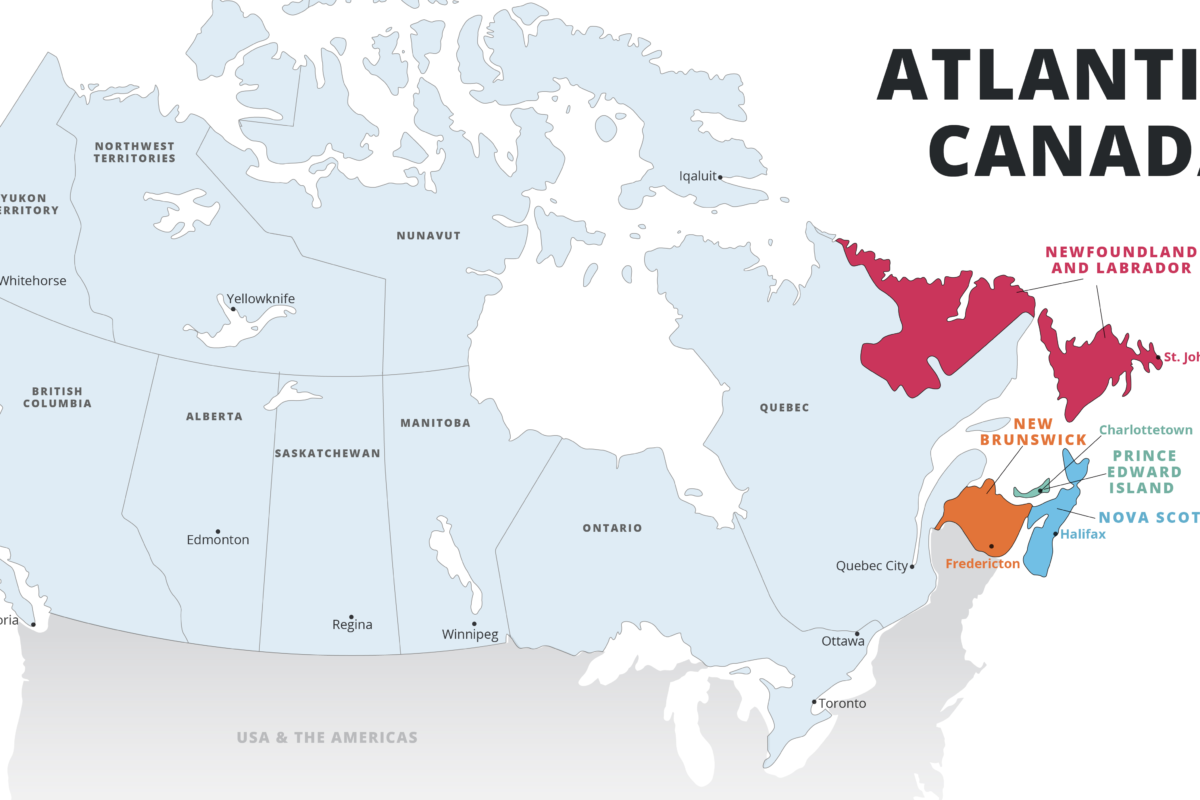Canada’s tech sector has been booming in the recent years. Technology is evolving rapidly, and Canada has quickly established itself as a leader in the emerging IT sector. More and more tech workers are immigrating to Canada in search of new employment opportunities and there is no secret why?
Canada offers various ways to immigrate as a tech talent, including programs which offer Canadian permanent residency. Even with the advent of coronavirus pandemic, this sector remains strong with companies actively recruiting talent around the globe.
Canada is helping to make it easier for businesses in the technology sector to recruit top talent. Whether candidates wish to move to Canada on a permanent or temporary basis, the following are key options are to consider:
Express Entry
Express Entry is a system used by the Canadian Government to manage Canadian permanent residence applications for filling labor gaps through certain economic immigration programs. It is an extremely popular option for global tech talent looking to immigrate to Canada. Tech workers are the main occupational group of immigrants who move to Canada through Express Entry.
If you are a tech worker who has not lived in Canada before, the best option for being eligible for Express Entry is through the Federal Skilled Worker Program (FSWP). The FSWP accounts for nearly half of all individuals who obtain an Invitation to Apply (ITA).
Federal Skilled Worker (FSW) applications are assessed based on an applicant’s ability to become economically established upon immigration to Canada. This is a key category in Canada’s Express Entry (EE) immigration system.
Minimum program requirements: To qualify under this program, the applicant must:
- Have at least one year of continuous full-time or equivalent paid work experience in the past 10 years in a skilled occupation (National Occupational Classification skill lever 0, A or B); or Qualify for an Arranged Employment in Canada (AEO) with a Labour Market Impact Assessment (LMIA) for a full-time, permanent job offer from a Canadian employer;
- Get a minimum level of CLB 7 or NCLC 7 for first official language in all 4 language areas (Reading, Writing, Speaking & Listening). To get points for the second official language, you must meet the minimum level of CLB 5 or NCLC 5 in all 4 language areas;
- Have a Canadian educational or Educational Credential Assessment (ECA)for a foreign education.
- In addition to fulfilling eligibility and points requirements, applicants must show that they have sufficient settlement funds to support themselves and their dependents after arrival in Canada
Important Points
- The applicant(s) must obtain at least 67 points based on Immigration, Refugees and Citizenship Canada’s (IRCC) immigration selection factors. The selection factors are as follows:
Education: 25 points | Language: 28 points | Work Experience: 15 points | Age: 12 points | Arrange Employment: 10 points | Adaptability: 10 points
- The applicants must plan to reside outside the province of Quebec. The province of Quebec selects its own skilled workers through a unique immigration system.
Provincial Nominee Program (PNP)
Furthermore, the next best option for tech talent to immigrate to Canada is PNP. The Provincial Nominee Programs (PNPs) allow Canadian provinces and territories to nominate individuals who wish to immigrate to Canada and are interested in settling in a particular province.
Provinces and territories (PTs) that operate a Provincial Nominee Program (PNP) can nominate candidates through the Express Entry pool, in addition to nominating foreign nationals to the existing paper-based process. PT nominations made via Express Entry are called “enhanced nominations” and enable each PT to increase its annual nomination space. Enhanced nominations are processed online and are subject to the six-month or less processing standard (in 80% of cases).
Minimum program requirements: To qualify under this program, the applicant must:
- Have a PT nomination that has been validated by the nominating jurisdiction; and,
- Meet the program requirements of one of the Express Entry federal immigration programs (i.e., Federal Skilled Worker, Federal Skilled Trades or Canadian Experience Class).
Important Points
- Candidates who have a PT nomination receive an additional 600 points in the Comprehensive Ranking System (CRS), which is usually sufficient to trigger an invitation to apply (ITA) at the next round of invitations.
- PTs have direct access to the Express Entry pool through a dedicated portal that allows them to view and nominate candidates in the pool.
- Once a nomination has been issued by a PT and accepted by a candidate, it cannot be cancelled in the candidate’s Express Entry profile. Should the candidate change their mind, or the PT withdraw the nomination after acceptance of the nomination, the candidate must cancel their Express Entry profile and submit a new profile in their online account.
Tech is a significant area of need, which is why some provinces operate tech worker streams, the most notable programs are offered by the provinces of Ontario and British Columbia.
The Ontario Tech Pilot is for workers who have experience in one of six tech occupations and have crated their Express Entry profile. In 2020 Ontario has held two Tech Pilot draws, including one during the pandemic, in May, under which over 700 candidates received invitations for a provincial nomination.
The demand for talent in B.C.’s tech sector is increasing faster than supply. British Columbia Tech Pilot invites immigration candidates to apply for a provincial nomination on an almost weekly basis if the candidates have a job offer in one of 29 tech occupations. In 2020, the province has held 14 tech draws, including earlier this month, with over 1,500 people receiving provincial nominations so far this year.
Start-Up Visa
The Canadian government also operates the Start-up Visa program. This program grants permanent residence to immigrant entrepreneurs while assisting them to become established in Canada. It is a popular option for tech talent and has significantly different selection criteria from other skilled worker programs.
The program encourages immigrant entrepreneurs to grow their companies in Canada. Under this program successful candidates need to be endorsed by a Canadian government designated entity such as an angel investor, venture capital firm, or business incubator, who are in turn responsible for supporting the entrepreneur’s success once they come to Canada.
Eligibility requirements of the program: To be eligible for the Start-up Visa Program, the applicant must:
- Have a qualifying business
- Get a letter of support from a designated organization
- Meet the language requirements
- Bring enough money to settle
- Pass Canadian security and medical clearances
- Plan to settle in a province other than the Province of Quebec
Qualifying Business: A qualifying business means you created a business that meets the following conditions:
- At the time you get a commitment from a designated organization:
- Each applicant holds 10% or more of the voting rights attached to all shares of the corporation outstanding at that time (up to 5 people can apply as owners)
and
- Applicants and the designated organization jointly hold more than 50% of the total voting rights attached to all shares of the corporation outstanding at that time
- At the time you receive your permanent residence:
- You provide active and ongoing management of this business from within Canada
- An essential part of the operations of the business happens in Canada
- This business is incorporated in Canada
Designated Organization
The applicant must get a letter of support from a designated organization. Designated organizations are business groups (venture capital funds, angel investor groups, and business incubator organizations) that are approved to invest in or support possible start-ups through the Start-up Visa Program. Successful applicants are required to secure a minimum investment for their Canadian start-up. If coming from a designated Canadian venture capital fund, the investment must be at least $200,000 CAD. If coming from an angel investor group, it should be at least $75,000 CAD. Applicants do not need to secure any investment from a business incubator. However, applicants must be accepted into a Canadian business incubator program.
Applicants are not required to invest any of their own money. If their Canadian start-up is unsuccessful, individuals granted permanent residence through this program will retain their permanent resident status.
Language Requirements
The applicant must meet the minimum level of the Canadian Language Benchmark (CLB) 5 in either English or French in all four areas (speaking, reading, listening & writing).
Enough money to settle in Canada
The Government of Canada does not give financial support to new start-up visa immigrants. An applicant is required to give proof that he/she has the sufficient money to support themselves and dependents after their arrival in Canada.
Global Talent Stream
Apart from permanent residency programs, Canada offers many temporary resident pathways for tech workers who are looking for a faster pathway to migrate before submitting a permanent residence application or do not wish to settle permanently in Canada. Immigration programs such as the Canadian Experience Class (CEC) are meant to support the process of temporary residents seeking permanent residency in the country.
One of the more notable temporary visa options is the Global Talent Stream. It enables Canadian employers to hire tech talent and bring them to Canada in about a month. The Global Talent Stream is one component of Canada’s Global Skills Strategy which has facilitated the arrival of over 40,000 tech workers to the country since 2017.
IMPACT OF COVID-19 ON CANADIAN IMMIGRATION
The COVID-19 pandemic is having a major impact on travel to Canada, but the country is still enabling temporary visa holders to enter the country for work. Invitations to successful immigration candidates are also progressing since Canada is planning to welcome them into the country once the pandemic has subsided. As a holistic view, Canada remains open to global tech talent who wish to call this country their new home.
With so many tech jobs and immigration opportunities, you may be unsure of where to start? Contact us and book a consultation!





